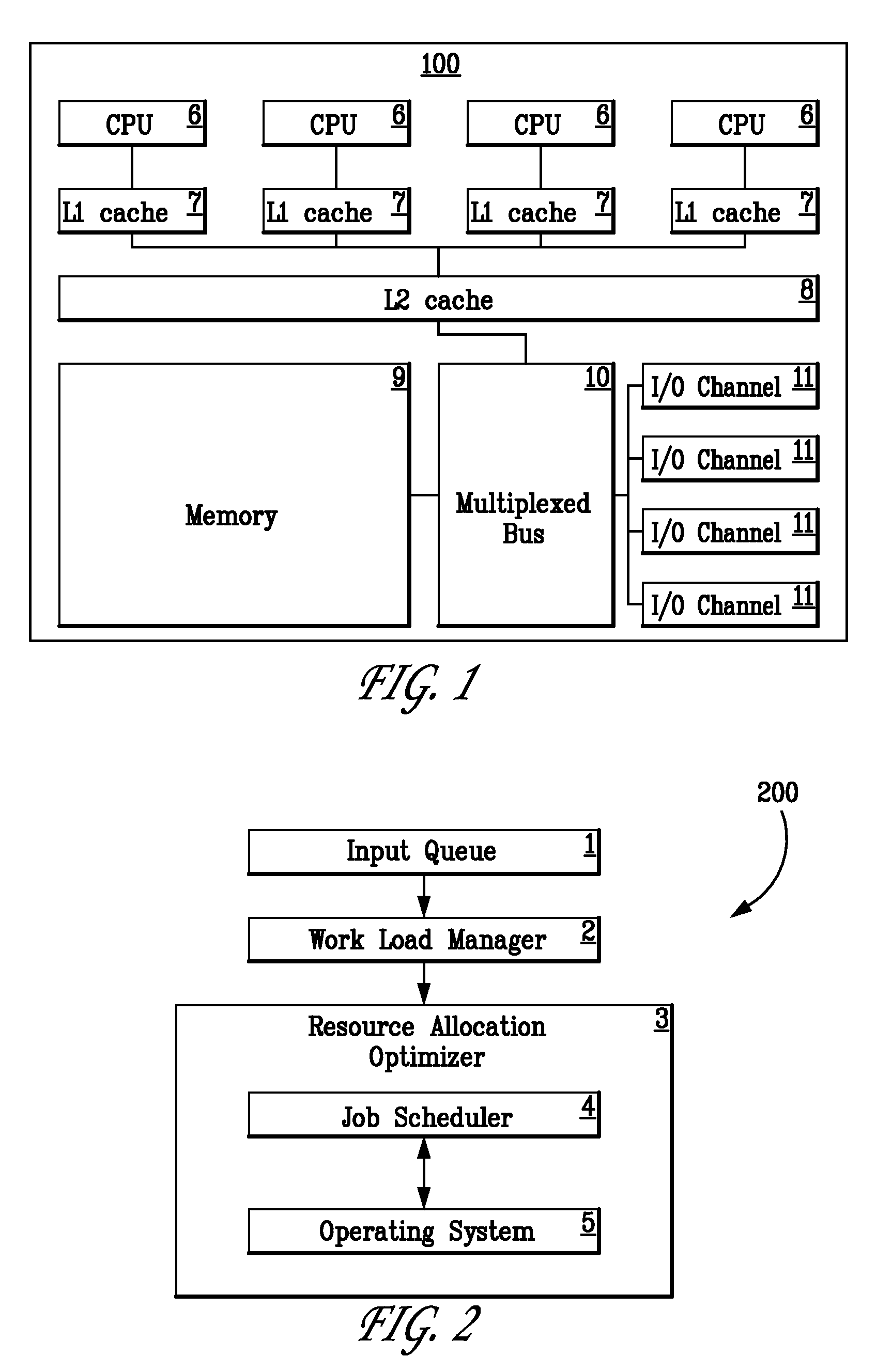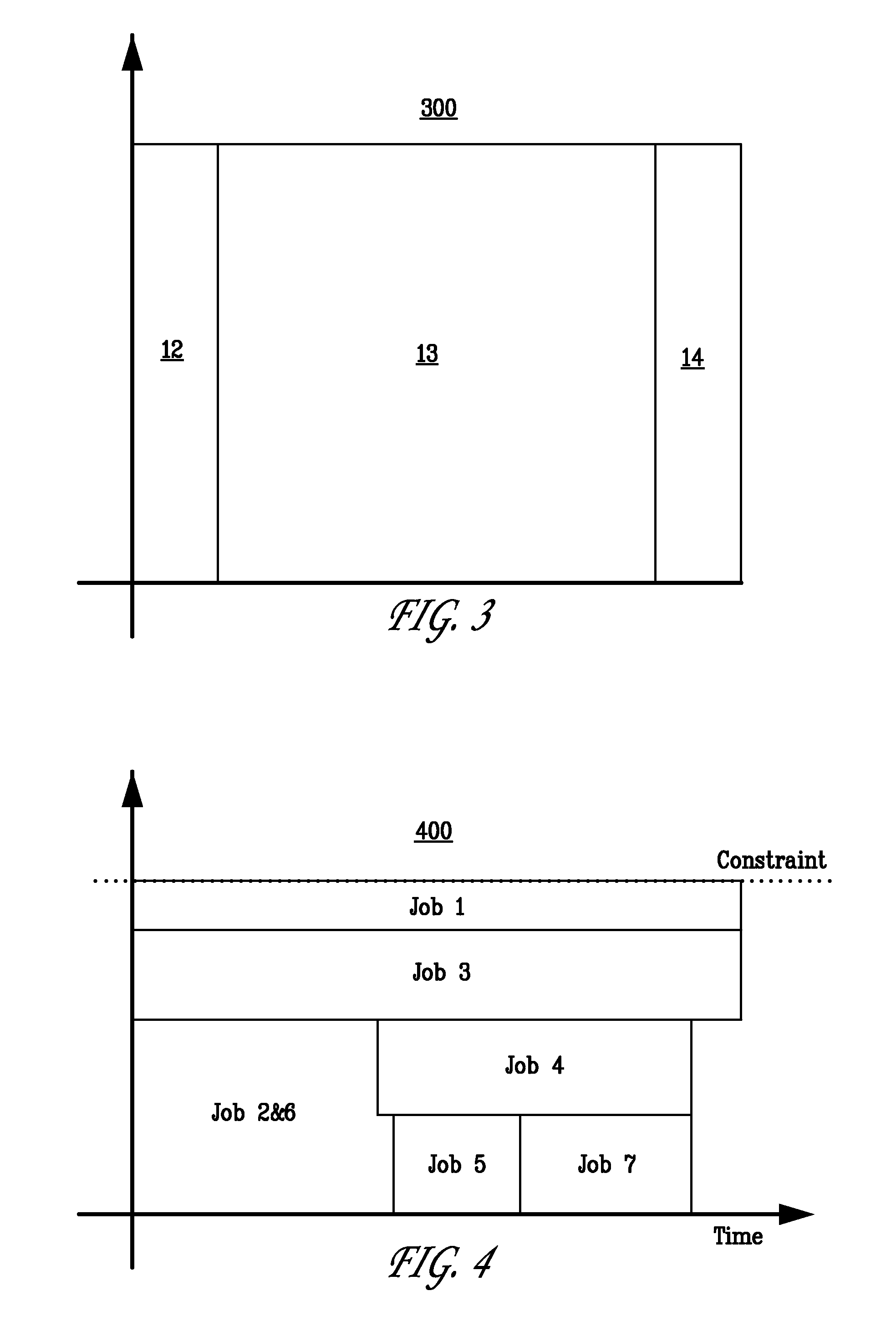Resource Allocation in Multi-Core Environment
a multi-core environment and resource allocation technology, applied in multi-programming arrangements, program control, instruments, etc., can solve the problems of inefficient strategy with respect to the use of available computer resources, inability to meet the needs of the processing unit of the computer, and idle available resources, so as to minimize the amount of time a job waits, the effect of optimizing job throughpu
- Summary
- Abstract
- Description
- Claims
- Application Information
AI Technical Summary
Benefits of technology
Problems solved by technology
Method used
Image
Examples
Embodiment Construction
[0022]Certain terminology utilized in the course of the present disclosure should be interpreted in an inclusive fashion unless otherwise limited by the express language of the claims. Notwithstanding, the following terms are meant to be inclusive of at least the following descriptive subject matter.
[0023]A processor core is inclusive of an electronic circuit design that embodies the functionality to carry out computations and input / output activity based on a stored set of instructions (e.g., a computer program).
[0024]A multi-core processor is inclusive of a central processing unit of a computer system that embodies multiple asynchronous processing units, each independently capable of processing a work load unit, such as a self contained process. Processor cores in a multi-core computer system may be linked together by a computer communication network embodied through shared access to common physical resources, as in a current generation multi-core central processor computer chip, o...
PUM
 Login to View More
Login to View More Abstract
Description
Claims
Application Information
 Login to View More
Login to View More - R&D
- Intellectual Property
- Life Sciences
- Materials
- Tech Scout
- Unparalleled Data Quality
- Higher Quality Content
- 60% Fewer Hallucinations
Browse by: Latest US Patents, China's latest patents, Technical Efficacy Thesaurus, Application Domain, Technology Topic, Popular Technical Reports.
© 2025 PatSnap. All rights reserved.Legal|Privacy policy|Modern Slavery Act Transparency Statement|Sitemap|About US| Contact US: help@patsnap.com



